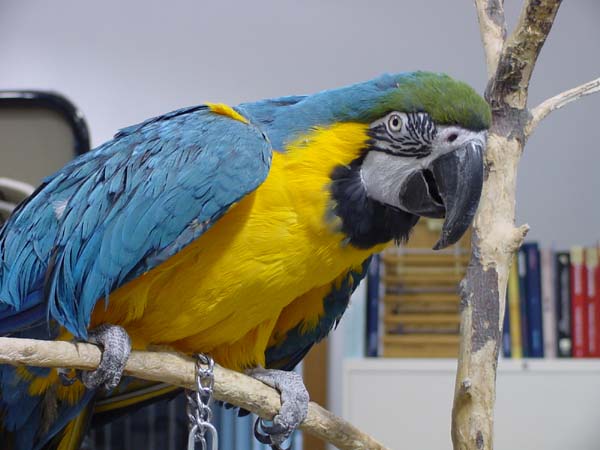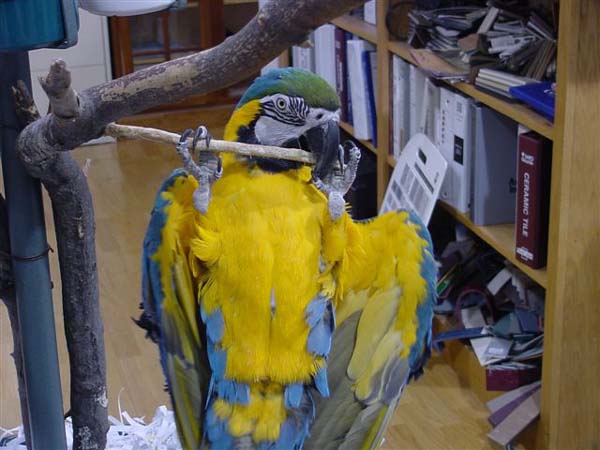THE FLOOR COVERING EXPERT
|
Phoenix: You picked a polyester. Polyester generally has more vibrant color selections and has better cleaning capabilities. Polyester is basically plastic. That mill that produces that carpet selection buys something like 17 million milk jugs a day and pulverizes then to spin their yarns. That's a lot of milk jugs, and that's all because milk jugs are actually virgin plastics. There are olefins, which are the same basic thing. They grind up anything into a mulch to spin it into yarns, but olefins aren't from virgin plastic.
Al: I don't know about you, but I'd like to know where my carpet fibers have been. So, I would opt for virgin plastic. However, is there a difference in the quality? Phoenix: I don't know that there is a huge difference in the quality between nylon and polyester. Al: Is it true that nylon resists stains better than polyester? Phoenix: True. Polyesters don't have memory whereas
nylon does. Nylon wants to stand back up. Polyester or olefin will mat quicker
than nylon. Nylon takes abrasion better, and they clean better because nothing
sticks to them. Polyesters will "pool". Have you ever noticed in hallways in
hotels or even in homes, that you can actually get a wear pattern from traffic;
that is called a pooling effect. Mills don't warranty against it either.
Actually, airflow in a house will affect polyester: low airflow will make yarns
stand down. Scientists have actually determined how it happens by building a
mock home and with infrared or something like that filmed the carpet changes
with slow airflow going through the house-it just lays the stuff down. That's
called "pooling". Al: Well, this sample is a polyester, and I like the color. But what does 55 ounce mean? Phoenix: It is just the way the yarn is spun or twisted. A heavier ounce like this one will have less problems with durability. If you bought a 30 ounce, it will mat quicker especially in direct traffic areas like hallways, steps, bedrooms or anywhere you have a constant path. Here is a hint: maintain your carpet-especially your carpeted steps. People generally ignore them because it is so hard to vacuum them. Don't make that mistake. Also, another tip: don't go walking around the house barefooted. It is actually worse than wearing shoes in the house. Al: Why is that true? Phoenix: Going around barefooted allows you to transfer your body oils to the yarn of the carpet. Mix a little dust and dirt to the sticky fibers and the fibers will start sticking to each other. That is how a carpet gets matted down. If you don't keep your carpets clean, brushed, and standing up, it won't be long the carpet is really matting down. Al: So, it is actually better to wear shoes or slippers in your house than going barefooted? Phoenix: Absolutely.
Al: We have talked about nylon and polyester. What about wool? Phoenix: Wool lasts forever. You will still see wool in houses that have been down for 30 of 40 years. The downside is price; it can run from $50 to over 100 a yard. We put in wool carpets in a house in Shorewood; the bill for the carpet was $40,000. Now, it was a plush wool. Al: For $40k, I would want plush. What about cleanability? Phoenix: Wool cleans well, but the thing with wool is we don't sell much of it because of the price that you pay to have wool. Ones tastes change over the years. You can carpet your house with nylon or polyester four or five times before you would have to replace the wool. If you buy wool, you are married to that carpet and that color tone for much of your life. However, people still buy it, but it's only represent 1% of our business.
Al: Tell me about warranties once the carpet is installed and about cleaning the carpet. Phoenix: Most of the mills will only warranty if you use hot steam extraction; it's a part of the warranty. You have to have the carpet cleaned a minimum of once every 18-months for the warranty. It has to be documented and a receipt that it has been cleaned by a professional cleaning company. Renting carpet cleaning equipment and doing it yourself doesn't qualify for the warranty. We talked about walking around barefooted. It is important to clean the carpets thoroughly, or else, you will merely mat down the yearn in dirt and grim. It will look like the carpet is wearing, but really it is merely matted down with dirt. Al: We haven't talked about the various types of padding.
Al: What is the difference in feel when you walk on a 6 pound pad or one that is heavier? Phoenix: A 6 pound pad will give you a softer feel than an 8 pound pad. The heavier pad is a firmer feel underfoot. They have rubber pads that will last for a life time because of the virgin rubber in them. Rubber pads have come a long ways. Years ago, they had old rubber waffle pads used of humidity conditions, moistures in the house, or cleaning your rug that would actually begin to solidify. Once they start solidifying, they would begin breaking down underfoot and in time turn to dust. They have made a lot of advances in the rubber pad industry, and rubber pads don't do that anymore.
Phoenix: We offer a moisture barrier pad which gives you moisture barrier top and bottom to prevent any spills from soaking into the pad or from moisture coming up through the pad to the carpet. When you spill something on a carpet, it can actually soak through the backing and into the pad itself. Believe it or not, that stain will keep coming back even after repeated cleaning. We call it "wicking". It is just like when you lay a cotton cloth on something. The cotton will draw moisture upwards. Those spots will continuously re-wick back through the pad and carpet and reappear. People can never understand why all of a sudden the spot is right back where it was. Wicking is the reason; these moisture barrier pads will prevent wicking from the pad.
Phoenix: Tile is a lifetime product. There are different classifications from class 2 to class 4, which has to do with firing. Some tile are fired once, some are fired twice to make them even harder. Tile ranges flat to glazed stone-look tile. Years ago, 6x6 or 8x8 inch tiles were most popular. We see more of the larger tiles starting at 12x12 and going all the way up to 24 inch square. The bigger tiles are the most popular today. Porcelain tile is really getting big in the residential market now. Porcelain tile is mainly seen in the commercial applications, but they are producing a lot more for the residential use. It is a through-body product, which means that it's the same on the top as it is on the bottom. The color and pattern will never be worn off. Al: I saw a product over there that looked like a tile but felt like wood. Phoenix: Yes, it is actually wood. It's like
fiberboard; it's compressed. It's basically a compressed byproduct of the wood
industry. They mix bonding agents with sawdust from sawmills. Then they
compress it. It costs about $12 a square foot installed. It is more expensive
than tile but it is softer underfoot and warmer than tile is.
Al: Okay. Now, on to window treatments. I have casement windows and like wooden blinds. My casement windows don't allow a lot of space for a 2" blinds. Phoenix: You can get smaller mounting brackets especially if you go with micros. They can still mount inside of a small opening. If you are worried about the cranks on the casements, you can always change from the full handle crank to the wing cranks. Al: We are also concerned about the view of the lake, but the sun is going to bake the blinds. Phoenix: And everything else near the windows. Someone told me that the windows that they claim are 90-95% UV protective are in reality more like 50%. Al: My concern is that I don't want to live in a black box and I like the blinds, but I don't really know what will work best. Phoenix: Well, if sun is a concern with wooden blinds, they have some blinds that are not fully wood. These manufactured blinds are made from plastic. It will give you the same effect. At least with the mini blinds, you can crank them to alleviate direct sun rays from entering the house but still allow natural light through the window. It will also allow you to still enjoy the view. Other window treatments will shade the window, but you won't be able to enjoy the lake. 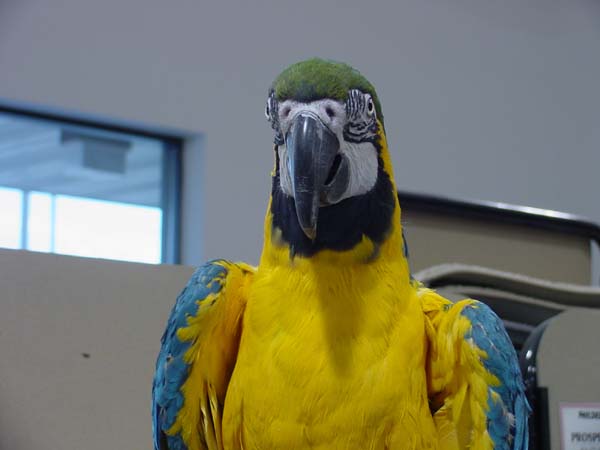
Al: Phoenix, you have been a great help to me in explaining carpets, pads, tiles, and window treatments. I've never met a macaw with the knowledge that you possess. How long have you been in the field and how many people work for you? Phoenix: It's been my pleasure. Here's my card. Give me a call if you have any question. If I'm tied up, ask for Mark Montgomery. He's been with me for a long time, and I trust him. Mark and I started CFS (Custom Floor and Surfacing, Inc.) over five years ago, and we have ten employees. Al: Thanks for all your help, Phoenix. This building a new home is a real hassle, but you have been very helpful. Phoenix: I know, but hang in there.
|







 Al: Phoenix, my wife and I are building a new home
and need your help to tell us what to do.
Al: Phoenix, my wife and I are building a new home
and need your help to tell us what to do.
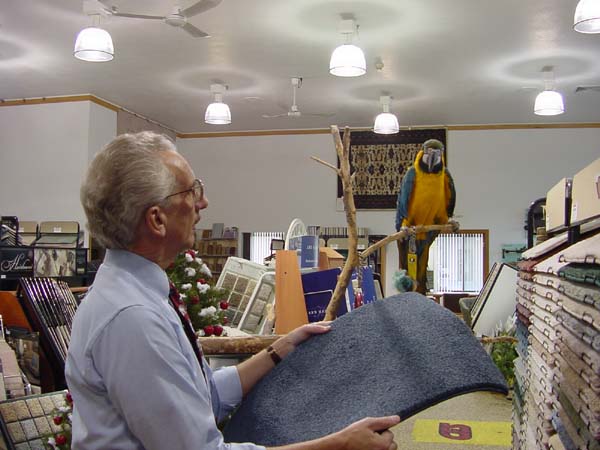
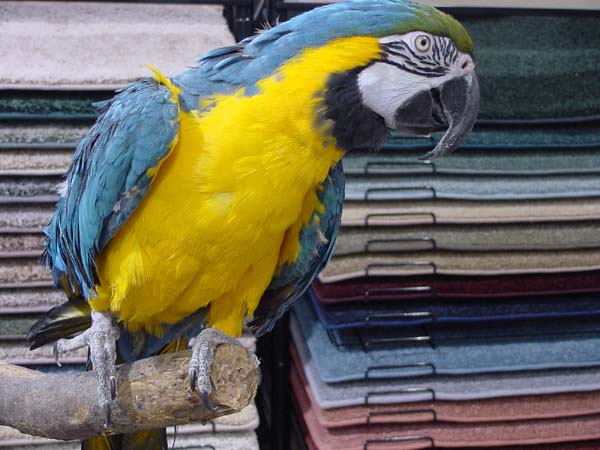 Al: So, the upside of polyester is it cleans up well,
but its downside is the pooling problem.
Al: So, the upside of polyester is it cleans up well,
but its downside is the pooling problem.
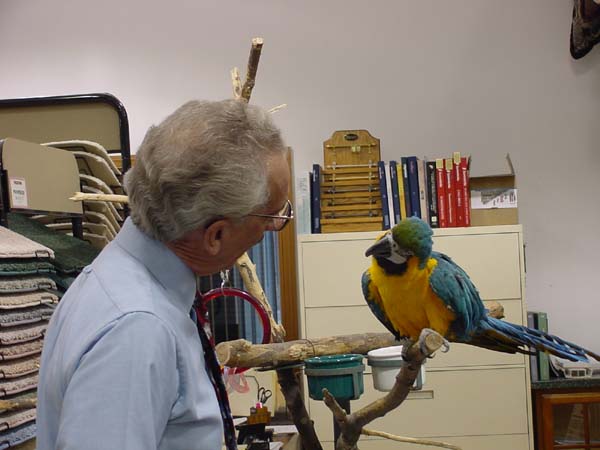

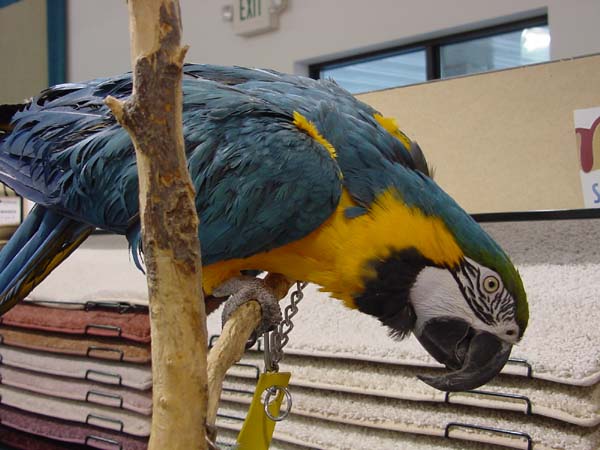 Phoenix: There's different types of pads.
They are either extruded or log and peel. With log and peel, they
manufacture the pad vertically. They buy old scrap padding and re-mulch
it, add plastic fillers to it to get the poundage. Sometimes, those
plastic chips that they add will settle and when the pad is on the floor, it
will squeak just like a duck. In an extruded pad, everything is
manufactured horizontally so those chips lay out flat. An extruded pad
won't settle like log and peel. In addition, the mills recommend for
warranty purposes that the pad is a minimum of a 1/2" thick and at least 6 pound
weight.
Phoenix: There's different types of pads.
They are either extruded or log and peel. With log and peel, they
manufacture the pad vertically. They buy old scrap padding and re-mulch
it, add plastic fillers to it to get the poundage. Sometimes, those
plastic chips that they add will settle and when the pad is on the floor, it
will squeak just like a duck. In an extruded pad, everything is
manufactured horizontally so those chips lay out flat. An extruded pad
won't settle like log and peel. In addition, the mills recommend for
warranty purposes that the pad is a minimum of a 1/2" thick and at least 6 pound
weight.
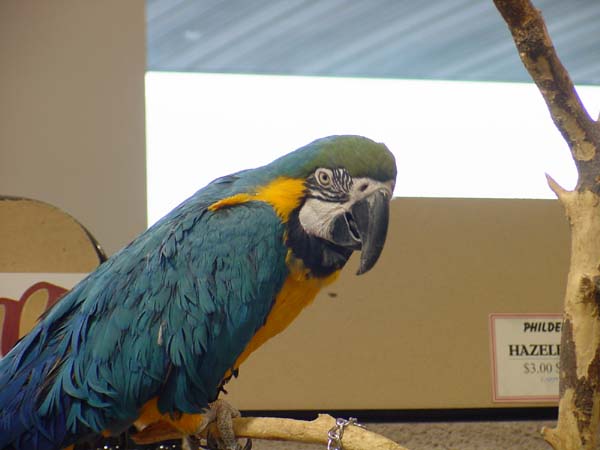 Al: My wife and I are building a house with a walkout
basement that we are finishing for my office and a spare bedroom. What type of
pad would you put down over concrete?
Al: My wife and I are building a house with a walkout
basement that we are finishing for my office and a spare bedroom. What type of
pad would you put down over concrete?
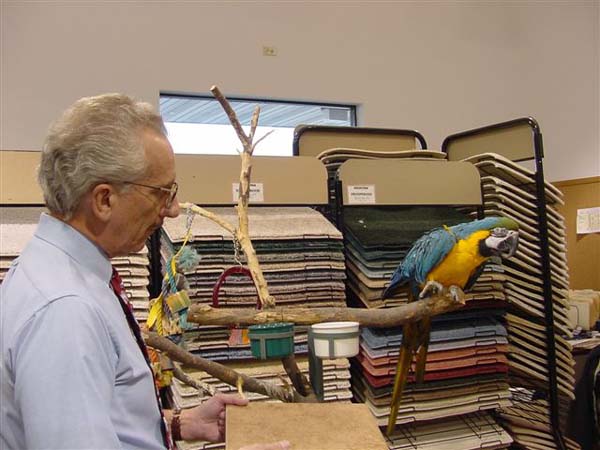 Al: Okay, Phoenix, you have given me a primer on
carpet and pads, tell me about tile. We have tile in the kitchen, entrance way,
and the bathrooms. What should I be looking for once I tell you that my wife
and I are looking at beige-colored tiles. Tiles don't seem like it is high
maintenance like carpet.
Al: Okay, Phoenix, you have given me a primer on
carpet and pads, tell me about tile. We have tile in the kitchen, entrance way,
and the bathrooms. What should I be looking for once I tell you that my wife
and I are looking at beige-colored tiles. Tiles don't seem like it is high
maintenance like carpet.